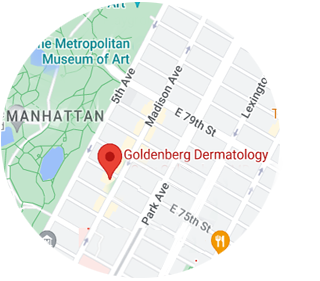The Anatomy of the Skin
Did you know that:
● The skin of an adult weighs about about 9 pounds?
● The skin is the largest organ in the body?
● The skin is constantly regenerating, shedding about 50, 000 dead cells a minute?
● The average person has about 3 million sweat glands in the skin?
● The skin progressively thickens until an individual reaches the thirties or forties then, it begins to thin?
The skin is a complex and dynamic system, responsible for keeping pathogens at bay, our body temperature consistent and ultraviolet radiation out. A look into the anatomy of the skin reveals some of the inner workings of our largest and most visible organ.
The Layers of the Skin
The skin consists of three principal layers. Within each layer, specialized cells and structures carry out key functions.
Epidermis: The Outer Layer
Key function: Protects the body from the environment.
The epidermis is stratified into distinct layers as follows: the basal cell layer (the deepest layer of the epidermis), the squamous cell layer (the thickest layer of the epidermis), the stratum granulosum and the stratum lucidum (two thin layers), and the stratum corneum (the outermost layer of the epidermis).
The epidermis consists primarily of keratinocytes, specialized cells that produce a tough fibrous protein called keratin. Keratin gives structure to the hair, nails and skin. Originating in the basal layer, keratinocytes migrate upwards from the deeper layers to the surface, eventually dying and forming a protective layer. The stratum corneum–the vital barrier consisting of dead keratin-filled cells–prevents bacteria, viruses and foreign substances from entering the body.
The basal layer of the epidermis contains melanocytes, cells that produce melanin, the pigment that gives the skin color. Melanin filters out the harmful ultraviolet (UV) rays that can damage skin cells.
The epidermis does not contain blood vessels; instead, it receives nutrients from the dermis (the underlying layer) via a process called diffusion. The nutrients are passed through the dermoepidermal junction, the tissue that joins the epidermal and dermal layers.
Dermis: The Inner Middle Layer
Key function: Supplies nutrients to the epidermis and regulates temperature.
Structure: Located beneath the epidermis, the dermis is the thickest of the skin layers and consists of two sublayers: the papillary layer (the more superficial layer) and reticular layer (the deeper layer). Composed primarily of connective tissues, the dermis gives the skin its elasticity and strength. As home to blood vessels, nerve endings, sweat glands, hair follicles and oil glands, the dermis contains the majority of the skin’s structures and components. What the components do:
● The extensive network of blood vessels transport nutrients and eliminate waste.
● Nerve endings sense stimuli such as touch, temperature, pressure and pain. With at least five types of pain and touch receptors, the skin’s sensory capacity can be highly specific and sensitive. In some areas of the body, such as the fingers, there is a greater concentration of nerve endings.
● To cool the body, sweat glands produce sweat, a liquid combination of salt, water and other substances that is released through pores. There are two types of sweat glands, the specialized apocrine sweat glands (located in the armpits and pubic regions) and the more generalized eccrine sweat glands (found throughout the body).
● Hair follicles are the hair-producing structures that are anchored in the dermis. Attached to hair follicles, oil glands secrete an oily substance called sebum, which helps keep the skin lubricated and waterproof.
Hypodermis or Subcutis: The Fatty/Deep Layer
Key functions: Helps insulate the body, provides protective padding and stores energy.
Structure: Contained in a matrix of fibrous tissue, fat cells are an important energy reserve. The fat layer is not uniformly thick, with some areas of the body having a deeper layer than others.












Leave a Reply
Want to join the discussion?Feel free to contribute!